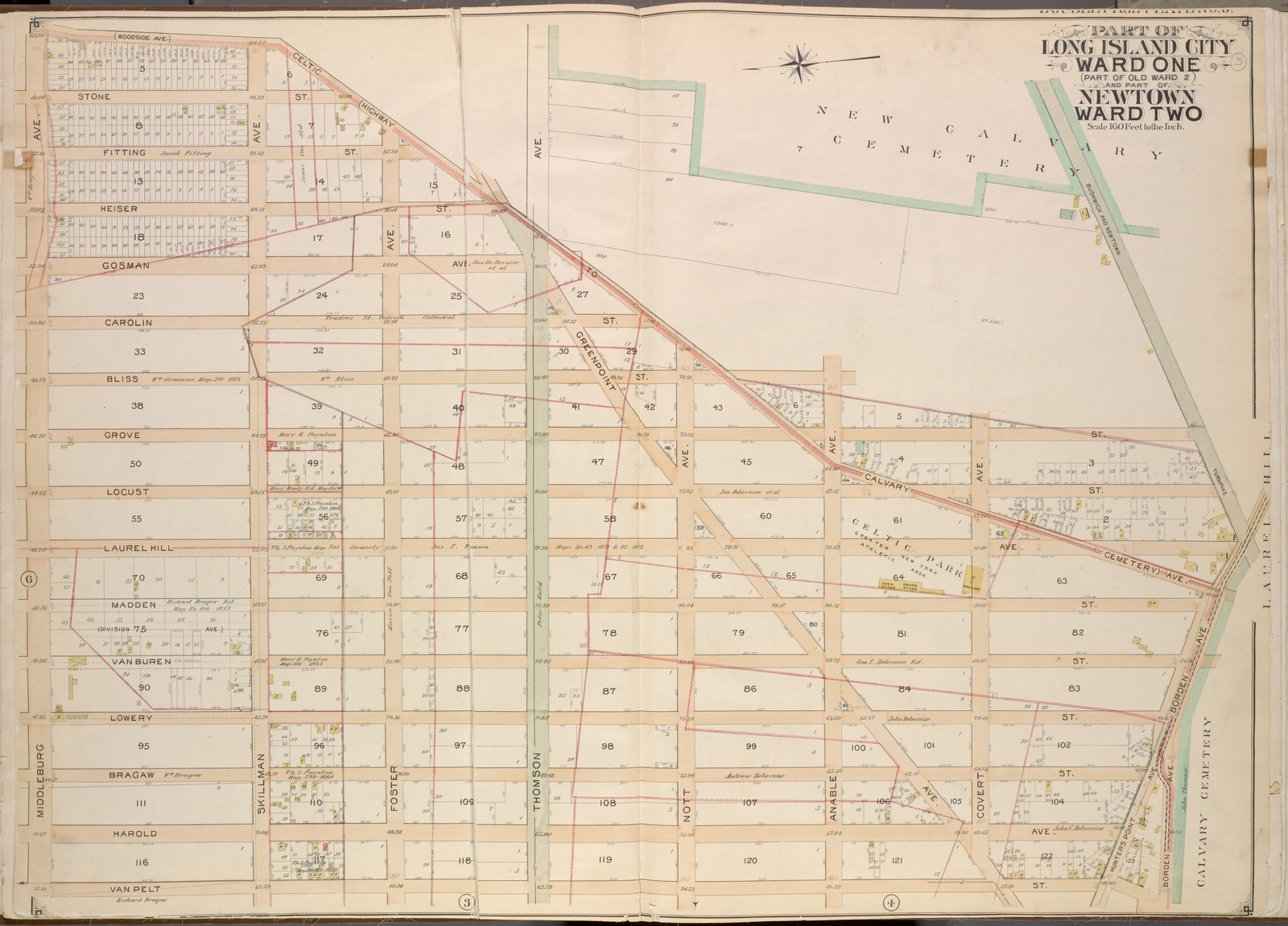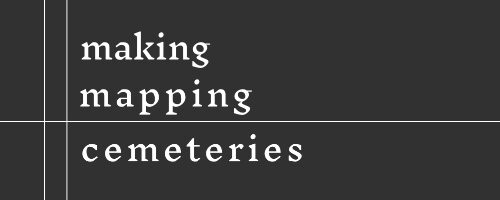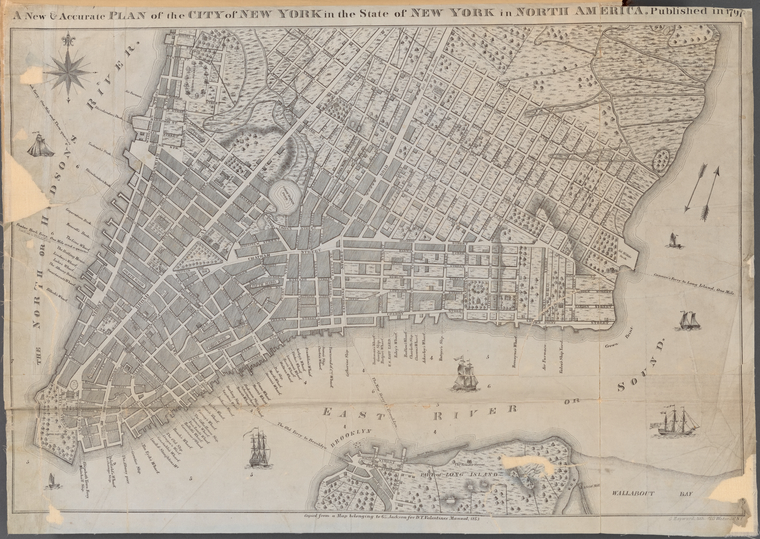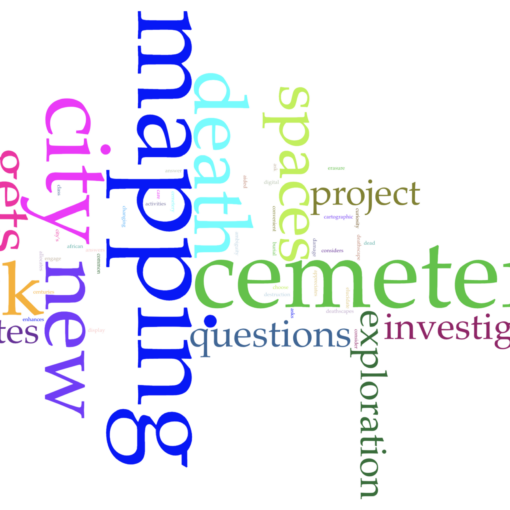1. What are the types of data that may be produced as part of this project?
Our project will generate data specific to five cemeteries, as well as data for the timeline visuals which will combine all five cemeteries data into one. We expect to have both primary (generated by team members) and secondary data (found by team members).
- How will data be collected (e.g., instrumentation, observation, survey, etc.)?
- We are gathering data between February and Mid-April, 2021, based primarily on research from digital archives, journal articles, and digital sources we have access to (either through our CUNY affiliations or are freely available to the public).
- Is it possible to regenerate the data? What are the implications for your research if the data are lost or became unusable later?
- Yes, our data (e.g., dates and locations) will be reproducible, though we may come to slightly different conclusions about it if our supporting text is also lost.
- What types of data will be produced?
- images: historical images (based on licensing availability) and present-day images taken by our team members at the selected locations
- videos: taken by our team members at the selected locations
- audio: to increase accessibility to our text, interviews with funerary experts, and accompanying podcast documenting our process of building this project
- text: descriptions and narratives produced by our research
- location data: longitude and latitude of cemeteries to produce map pins
- code: to build our website
- metadata: for each page of our site, as well as each media item that appears on it to ensure searchability and accessibility
- What are the tools or software you will be using to create/process/analyze/visualize the data?
- Google sheets, Google docs, Mapbox, timeline tools like TimeLineJS or Vuetify
- What are your access, storage, and backup strategies?
- All primary digital assets (images, videos, and audio) will be stored on Wikimedia commons. Our main tool for storing data will be a spreadsheet. Each sheet will be filled out by all team members as they do their research.The spreadsheet will include multiple sheets:
- general/map
- horizontal timeline
- vertical timeline
- historical cemetery
- cemetery repurposed as park
- cemetery war memorial
- cemetery rediscovered
- established/other cemetery
- All primary digital assets (images, videos, and audio) will be stored on Wikimedia commons. Our main tool for storing data will be a spreadsheet. Each sheet will be filled out by all team members as they do their research.The spreadsheet will include multiple sheets:
2. What standards will you be using for data collection, documentation, description, and metadata?
The spreadsheet will reside on Bri’s google drive, GitHub repository (in a csv format, as well as a link to the google drive in the Read.me file), team members’ local machines. Version control is built into the Google spreadsheet so we can see how/when the data is updated, and changes to our website code will also be versioned and saved within GitHub. And we are documenting our weekly contributions to the project via individual diary-like updates in our Mapping Cemeteries Commons group.
- How do you document data collection procedures?
- We are noting all of our data collection via our shared Google sheet. Each sheet will include the following list of columns that is subject to expand:
- name
- custodian
- caption
- description
- data type
- purpose
- tag
- source link
- citation
- Institution
- We are noting all of our data collection via our shared Google sheet. Each sheet will include the following list of columns that is subject to expand:
- How will you ensure good project and data documentation? Who is responsible for implementing this data management plan?
- All team members are responsible for implementing this data management plan; our names will be next to all data we enter onto the sheet.
- What directory and file naming conventions will you be using?
- We will follow Tidy data and other best practices. All file names will use underscores (_) instead of spaces, and they will include dates to aid in version control. Information about our files will be included in a Read.me file with a data abstract, as well as a data dictionary as needed.
- What project and data identifiers will be assigned?
- Data will be organized via cemetery/memorial location. Historical data we include in our vertical timeline will be organized separately.
- Will you use disciplinary or community standards for data formatting, description, interoperability, or sharing for any of the data you collect?
- We will follow all disciplinary standards, and customize to our project needs as necessary.
3. What steps will you take to protect your or your participant’s security, privacy/confidentiality, intellectual property, or other rights? (Check current university policies for requirements.)
- Who controls the data (e.g., PI, student, lab, University, funder), and at what level?
- Team members control the data.
- Google docs reside under Bri’s account as she may be using this for future phases/capstone project.
- Any special privacy or security requirements (e.g., personal data, high-security data)?
- We will make sure to use up-to-date software and upgrade as necessary to avoid any vulnerabilities. Additionally, no personal information will be stored on our site.
- Do you have any embargo periods to uphold?
- No
4. If you allow others to reuse your data, how will the data be accessed and shared? What are the data sharing requirements your work is subject to (e.g., funder, journal)?
- Who is your possible audience? Who may use the data now, or later?
- We are planning an initial “soft launch,” so our initial primary audiences are our classmates and attendees at the GC Digital Showcase.
- Going forward we expect our audience to include:
- New York City historians, especially those interested in the macabre, necropolitics, and lesser-known or “forgotten” histories
- Scholars and members of the public studying cemeteries and memory studies
- People offering and interested in taking walking tours and practicing alternative forms of tourism
- Bri may expand on this project for future phases and/or for her capstone project.
- When will you publish the data and where?
- We will share all of our data on GitHub, and media we create will be shared on Wikimedia. We will publish our data on our website, and we will also share our findings in Clio as a potential walking tour, with links back to our website.
- What tools/software are required to access your data?
- Users will access our data via our public-facing website, social media posts, and Clio.
5. How will the data be archived for preservation and long-term access?
- How long should the data be retained (e.g., 3-5 years, 10-20 years, permanently)?
- Our data will be retained for 3-5 years, at which point this DMP will be re-reviewed to determine whether longer-term access is required.
- What file formats will you be using, or converting to? Are they sustainably accessible?
- Our data spreadsheet will be saved in csv format, and a link to the Google docs will be included in the Read.me file stored on GitHub. Text will live in Word and Google docs, and be backed up in rich text non-proprietary formats. Images, video, and audio files will be saved as JGP or PNG, MP4, and FLAC files (or other non-proprietary format), respectively. The non-proprietary formats will live in GitHub, and both proprietary and non-proprietary formats will be stored in our Mapping Cemeteries Common group library.
- Who will maintain my data for the long-term?
- Bri
- Which data archives are your data appropriate for (subject-based? institutional)?
- Our data archives can be appropriate for New York City history, New York–related migration studies, and Digital Humanities archives

[This entry was originally posted to DHUM 70002 Digital Humanities: Methods and Practices (Spring 2021) in Group Project Updates and tagged data management plan, group project updates, mapping cemeteries on March 7, 2021.]







